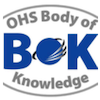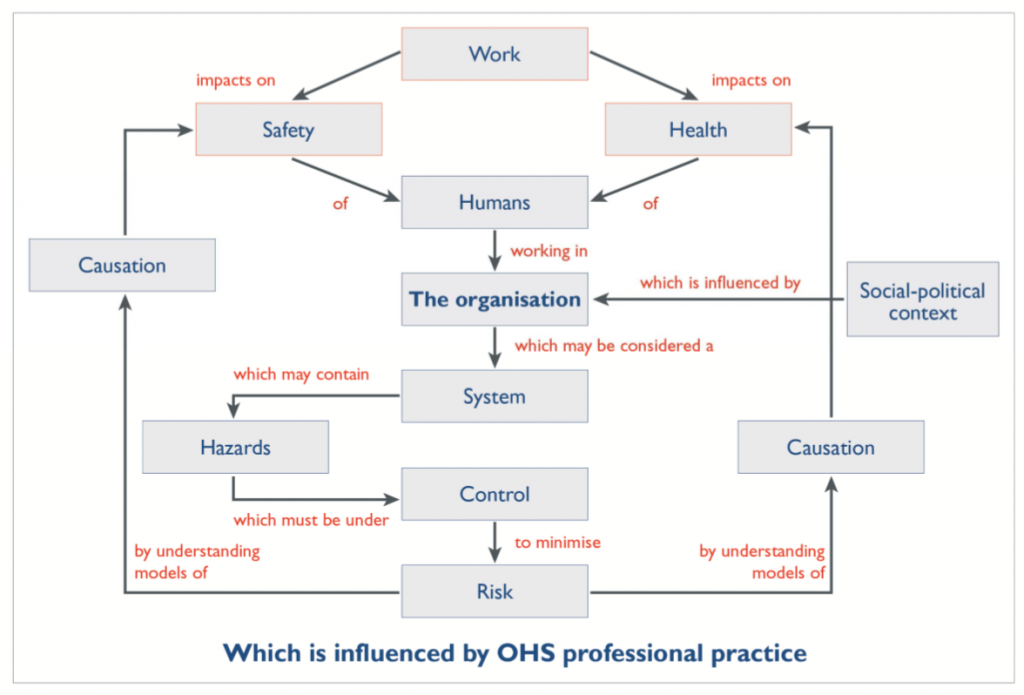In developing the OHS Body of Knowledge it was determined that it would meet the requirements of a profession as “possessing special knowledge and skills in a widely recognised body of learning derived from research, education and training at a high level” (Professions Australia, 1997)
The OHS Body of Knowledge takes a ‘conceptual’ approach. As concepts are abstract, the OHS professional needs to organise the concepts into a framework in order to solve a problem. The overall framework used to structure the OHS Body of Knowledge is that:
Work impacts on the safety and health of humans who work in organisations. Organisations are influenced by the socio-political context. Organisations may be considered a system which may contain hazards which must be under control to minimise risk. This can be achieved by understanding models causation for safety and for health which will result in improvement in the safety and health of people at work. The OHS professional applies professional practice to influence the organisation to being about this improvement.
This can be represented as:
OHS Body of Knowledge chapters address these key concepts with a number of key concepts having sub-concepts addressed by additional chapters.
Please click here to view the OHS BoK Synopsis
Just as understanding and managing OHS is not a straight line, in using the OHS Body of Knowledge is not about starting at chapter 1 and sequentially reading the chapters. It is not a text book. Also, you can’t expect all the answers to a particular problem or question in one chapter. Just as in managing OHS where there are many inter-relating factors to consider, it in intended that in using the OHS Body users will draw on the concepts (or chapters) to build up the knowledge to answer the question, solve the problem or develop a strategy.


